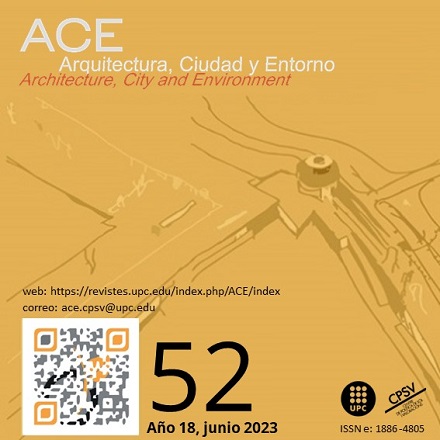The Constructed Instant: Gerrit Rietveld's Forgotten Sonsbeek Pavilion of 1958
DOI:
https://doi.org/10.5821/ace.18.52.11919Keywords:
neoplasticism, exhibition architecture, open concept, De stijlAbstract
To innovate in the design and construction of contemporary architecture requires elaborating on knowledge of key architects and their evolution through their works. Rietveld designed the pavilion for the Fourth International Architecture Exhibition, held in 1958 in Sonsbeek Park, by reusing two existing sheds. The unpublished documents for this pavilion have been located at the Het Nieuwe Instituut, Rotterdam, Rietveld, G.Th. (Gerrit Thomas) / Archieve. The aim of this article is to make known this project and situate it in the series of international sculpture exhibitions held in Sonsbeek, contribute to complete the knowledge of Rietveld's architectural production, and delve into the compositional and constructive processes of the exhibition architectures he designed. The research method used starts from original documents to produce drawings that facilitate the interpretation of the 1958 pavilion, relate them to Rietveld's essential formative principles and evaluate the contributions of this work by comparing it with other exhibition architectures. Although the concepts applied to the design of the Sonsbeek'58 pavilion are the development of previous findings, on this occasion Rietveld managed to create an architectural syntax that made the three dimensions of Cartesian space visible, revealing the special importance of geometry, modulation, and the constructive condition of each element.
Downloads
Published
Issue
Section
License
| INTELECTUAL PROTECTION CRITERIA |
At this moment, it is count with the "Oficina Española de Patentes y Marcas", while global protection it is being processed by the World Intelectual Property Organization (OMPI/WIPO). Nevertheless the International Standard Serial Number Office (ISSN) has given the following numbers ISSN: 1886-4805 (electronic version) and 1887-7052 (paper version). All articles will be peer reviewed, using double blind reviewing. |
| COPYRIGHT |
The article contents and their comments are authors exclusive liability, and do not reflect necessarily the journal editor commitee's opinion. All ACE published works are subject to the following licence CC BY-NC-ND 3.0 ES http://creativecommons.org/licenses/by-nc-nd/3.0/es/ It implies that authors do not hold nor retain the copyright without restrictions but only those included in the licence. |





































